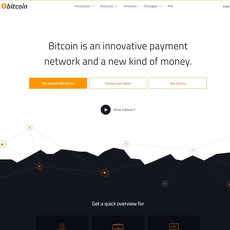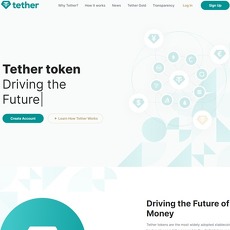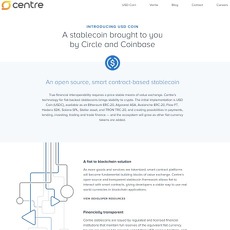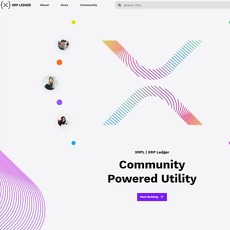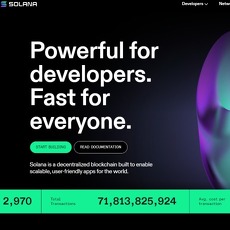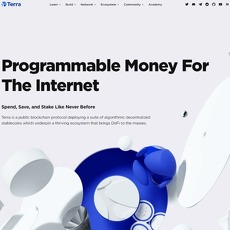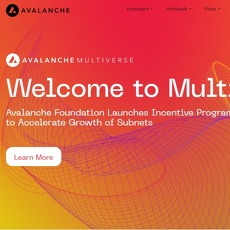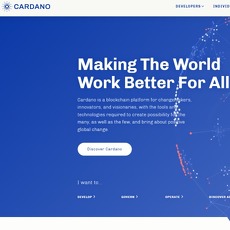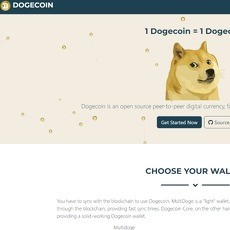Official Cryptocurrency Coins Sites or Blockchain Platforms
Official Cryptocurrency Coin Platforms or Sites
If you are a type of person that has a genuine interest in getting engaged within the world of cryptocurrencies and blockchain technology as a whole and is curious as to exactly how these platforms actually work as a means of learning why they should invest their time, effort and crypto within specific projects, alongside the intricacies that go in the development of decentralized finance, decentralized applications, and non-fungible tokens, then blockchain networks play an essential role in making all of that work.
There is a point of appeal in regards to growing cryptocurrency-based and blockchain-based projects due to the fact that they enable innovation and solutions to a variety of different issues found within traditional finance and aim to achieve something different, unique, and innovative in the process.
No matter what aspect of blockchain technology has piqued your interest within the realm of crypto, it is clear that you will require the functionality found within blockchain technology as a means of achieving a specific goal that you might have in mind currently. However, keep in mind that there are numerous blockchain platforms out there that are made available and that the choice can be a bit intimidating when it comes to picking the correct platform to use.
Keep in mind that, typically, blockchain platforms are of interest to two kinds of people. The first is the software developers that aim to develop solutions, otherwise known as decentralized applications (dApps), on top of these networks as a means of providing utility through their usage, and the second is the investors who aim to invest within a blockchain platform through buying its utility token early on, with the hopes that that project will eventually grow and flourish, and so will the value of the token that they initially purchased.
Specifically speaking, blockchain platforms have been developed as a means of enabling freedom when it comes to financial services or products on a global scale initially, but over time evolved into something much more.
For example, with the rise of smart contracts found within specific blockchain networks, we have seen an increase in the utility of decentralized finance (DeFi) as well as non-fungible tokens (NFTs), which have been the main point of appeal for a lot of investors and creators.
That said, there are a plethora of different blockchain networks which are currently available for you to pick from and invest in, and as such, this piece is intended to give you an introduction to some of the technicalities which define blockchain platforms and some of the ways through which you will be able to find and identify the reliable ones. Once we go over all of that, we will then take you through a deeper dive through our review methodology, alongside a list of the top blockchain platforms, so you can engage within these projects and quickly and as reliably as possible.
With this in mind, hopefully, by the end of this, you will have a clear level of understanding when it comes to everything that you need to know regarding the best blockchain platforms, and you can know what to look for in each option will be available to you.
What Is a Blockchain Platform?
A blockchain platform is essentially a distributed database that gets shared across what are known as nodes that are within a computer network. By being essentially this large database, a blockchain network is responsible for the process of storing information electronically within a digital format. Blockchains have gathered a reputation throughout the years due to the major role that they play within cryptocurrency systems, one of the most prominent and well-known projects within this aspect being Bitcoin, as it maintains a secure and decentralized record of many transactions. The innovation with blockchain technology is mainly found within the fact that it can guarantee the fidelity as well as security of a record of data, all whilst generating trust without the need for a trusted third party such as a bank example or a brokerage.
However, when we compare a blockchain platform to a typical database, we can see that a blockchain is how the data gets structured as a whole. Specifically, a blockchain can collect information together in groups which are known as blocks, where every single one of these blocks can contain information. They have specific storage capacities, and when these capacities get filled, they are closed and then linked to the previously filled block, all of which form a chain of data that is known and called the blockchain network. What this means is that all new information that follows any previously added block is compiled into a completely new block, which needs to be formed, and then also gets added to the chain once it is filled.
To summarize all of this, a blockchain is defined as a type of shared database that essentially differentiates itself from a traditional database due to the fact that it stores information in a unique way. In other words, blockchains are known due to the fact that they store data within blocks which are linked together through the usage of cryptography. Whenever new data comes in, it is entered within a fresh block, and once that block gets filled with data, it then gets chained onto a previous block, and all of this makes the data chained together chronologically.
There are different types of information that can be stored within blockchain networks. However, one of the most common use cases used thus far has been a ledger for any transactions which occur within a blockchain network. In other words, the blockchain network can be used in a decentralized way so that not a single person out there, nor even a single group, can have control over it; rather, it allows users to collectively have control. What this also means and indicates is that decentralized blockchains are fully immutable, which means that the data which gets entered within them is irreversible, and for the case of Bitcoin, for example, the transactions get permanently recorded and can be viewed by just about anyone out there.
How Does a Blockchain Platform Function?
To truly get a perspective of how a blockchain platform truly works, we will need to go over one of the most popular and one of the first blockchains networks to ever get released and, to this very day, dominates the crypto industry known as the Bitcoin blockchain network. Bitcoin is by far the first peer-to-peer (P2P) payments system, which was specifically developed to operate without the need to have a central authority, such as a bank or even a government, have control over it. What this means is that it enables full immunity to any manipulation, which could lead to a devaluation, and was the case for many national currencies. This is made possible due to the fact that the decentralized network utilizes what is known as a Proof-of-Stake (PoS) consensus mechanism to validate the transactions, which means that a decentralized network of miners is responsible for keeping it online, running, and active.
What this results in is the fact that not one single person is in charge of the maintenance behind the blockchain network and that each of the transactions gets backed up as well as recorded within a chain of blocks that gets filled with data.
Every single computer that maintains the blockchain network here is responsible for the process of mining the native cryptocurrency token and has a full copy of the public ledger. This results in the fact that all of the transactions within the network can be fully public and that users are given the opportunity to be able to freely buy or even sell the tokens directly to one another within the blockchain network.
Every single user can also use a centralized exchange to buy the tokens through the usage of traditional FIAT currencies, but this is mostly a side function instead of a native-blockchain function.
Every user can also access the information and view the verified transaction within the blockchain network, but remember that the identity of the parties involved in the transactions will remain anonymous. As such, instead of recording the names of the transacting parties in a series of alphanumeric characters, the bitcoin network instead records them indifferently as a sequence of alphanumeric characters, which aids in anonymity.
The Verification Process
The transactions need to get verified before they eventually get recorded onto the blockchain network. As such, to enable this as a functionality within the network, Bitcoin specifically utilizes what is known as cryptocurrency miners. What we are about to describe is the Proof-of-Work (PoW) consensus model.
Miners are responsible for the process of validating all of the transactions that occur within a blockchain network. What this means is that these miners have a job that involves solving complex cryptographic puzzles or mathematical problems by running the open-source clients that are installed on purpose-built machines. This means that each computer's hardware will need to solve difficult cryptographic puzzles, and once they do so, they verify the pending transactions, after which the miners get eventually rewarded with an allocated amount of BTC tokens.
The block gets officially recorded within the blockchain network, and the block gets added to the previous block, which forms a chain. Keep in mind that each blockchain network will either have a limit on the number of tokens that can be mined, while some networks might not have a limit. In the case of Bitcoin, the limit is 21 million tokens which can be added to circulation within the network.
We will now go over another method through which transactions can get verified which is known as the more eco-friendlier approach, and this is known as the Proof-of-Stake (PoS) consensus mechanism.
The PoS consensus mechanism is an alternative mechanism used as a means of processing transactions and creating new blocks within a blockchain network. While with PoW, the method we previously discussed, miners need expensive computer hardware and a high level of energy consumption as a means of solving the cryptographic puzzles and adding blocks to the chain, PoS does things a bit differently. This consensus mechanism is a method through which entries are validated and distributed within the database and keep the database secure. What happens here is that cryptocurrency owners can validate the block transactions based on the number of coins that a validator actually manages to stake. PoS was created to be an alternative PoW, which is now seen as the original consensus mechanism which was used as a means of validating a blockchain and adding new blocks.
Staking is the process where someone pledges their own coins to be used for the verification of transactions. Throughout this procedure, the coins are locked up while the user stakes them. However, they can be unstaked at a later point in time when the user wants to trade them.
What happens here is that when a block of transactions is ready to be processed, the cryptocurrency's PoS protocol will choose a validator node to review the block. The validator then checks if the transactions within the block are actually accurate, and if they are indeed accurate, they add the block to the blockchain and can receive crypto rewards for their contribution. If a validator proposes adding a block with inaccurate information, they then lose some of the staked holdings as a penalty. Anyone that owns some tokens that are native tokens within the blockchain network that want to be a validator can stake them. When the blockchain network, in this case, wants to verify the blocks of transactions, the protocol selects a validator, and the validator can then check the block, add it, and receive more of the native cryptocurrency token as a means of incentivizing them to do it and as a reward.
The biggest difference between PoW and PoS is the fact that PoW is a lot more energy-intensive due to the fact that it requires miners to complete and solve complex mathematical puzzles. The first miner to solve the problem gets to add the block of transactions and earn a reward, which results in mining devices across the globe competing to solve the same problems and use substantial energy in the process. Due to the fact that PoS does not require any validators to solve complex equations, it is, as such, a lot more eco-friendly.
Decentralization Explained
Another key aspect surrounding blockchain's point of appeal is the fact that they are fully decentralized. To get this point across, imagine that there is a corporation out there that has a server filled with 100,000 computers, all of which are used to maintain a database that holds all of the information of their clients. This company then owns a warehouse where these servers are contained, which means that each of them is under the roofs they control, and they have full control over each of these servers alongside all of the information that is contained within them. This provides a single point of failure, which means that if electricity, for example, at that location, were to run out, or the internet connection got disabled, or if they manage to get destroyed, the data can get lost, corrupted, or inaccessible.
Blockchain networks do things a bit differently as a means of combating this, so it does not ever occur.
Specifically, what a blockchain essentially does is that it allows the data which is held in a database to be spread out across many network nodes that are located within a variety of different locations. What this leads to is a high level of redundancy, and the data fidelity is maintained as stored securely. What this means is that if anyone were to alter a record at one instance of the database in question, the other nodes would then not be altered, and this would prevent a bad actor is doing so as the transaction in question could not get confirmed by the entire network. If one tampers with a blockchain's record of transactions, all other nodes can then cross-reference each other and pinpoint with ease the node that has provided information that is incorrect, which means that this system establishes a transparent order of events, where no single node that is a part of the overall network can alter any of the information which is held within it.
Due to this fact, all of the information, as well as the history, such as the transactions of a cryptocurrency token, for example, is also fully irreversible. This record could be a list of transactions. However, a blockchain can hold a variety of different information as well.
Blockchain Transparency: An In-Depth Look
Due to the fact that a blockchain network is fully decentralized, all of the transactions can, in turn-be viewed transparently through having a personal node or through the utilization of the large number of available blockchain explorers, which enable anyone to see the transactions within a blockchain network as they are occurring live. Every node will have its own copy of the chain, which gets updated the moment in which fresh blocks are confirmed as well as added to it, and what this essentially means is that if anyone wanted to, they could track the blockchain network in question whenever it ends up going.
History of Blockchains
While many consider Bitcoin to be the start of blockchain technology, things actually go a bit further down the timeline. Specifically, blockchain technology as a concept was first described in 1991 by the research scientist known as Stuart Haber, as well as W. Scott Stornetta. They essentially aimed at introducing a computationally practical solution, where they could time-stamp digital documents so that they can always be able to check them and disable any backdating or tampering within them. As such, they developed a system using the concept of cryptography which is secured in chains of blocks to store the time-stamped documents.
However, in 1992, Merkle Trees got incorporated into the design, which makes blockchain a lot more efficient due to the fact that it allowed several documents to be collected within a single block. These are used to create a secure chain of blocks, which store a series of data records, where each data record is connected to the one before it.
Then in 2004, a computer scientist, as well as a cryptography activist known as Hal Finney, ended up introducing a system which was at the time known as Reusable Proof-of-Work (RPoW), which was used as a prototype for digital cash. In other words, this marked a significant step in the history of cryptocurrencies as a whole. This is due to the fact that the system worked through receiving a non-exchangeable and non-fungible Hashcash-based PoW token which created an RSA-signed token that could be transferred from one person to another person, which ultimately solved the double-spending problem by keeping the ownership of tokens registered on a trusted server. This server was then designed to allow users throughout the world to verify the correctness as well as the integrity in real-time.
Then we can finally move on to what we know today as Bitcoin. Specifically, in 2008, a person or a group of people that went by the pseudonym Satoshi Nakamoto ended up conceptualizing a theory of distributed blockchains. Nakamoto improved the overall design in a unique way through which blocks could be added to the initial chain without requiring them to be signed or even trusted by parties. These modified tries could contain a secure history of data exchanges, and it even utilized a peer-to-peer (P2P) network for time-stamping as well as everything for each exchange. All of this could be managed autonomously, all without requiring any central authority. These improvements ultimately ended up being so beneficial that they made blockchains the backbone of cryptocurrency.
Why Blockchains Have Grown in Size
To truly understand how blockchains have grown in size, we will need to dive a bit deeper into the blockchain platforms and how the technology has evolved thus far. Specifically, blockchain 1.0 was the currency itself. This describes the ledger which allows financial transactions based on blockchain technology or DLT to be executed with the native cryptocurrency token, which is used as "cash for the internet" and enables the internet of money.
Then blockchain 2.0 can be described as the point in time when smart contracts were developed. This is due to the fact that Bitcoin had a major issue at one point in time, which led to wasteful mining as well as a lack of network scalability.
As a means of overcoming all of these issues, this version extended the concept of Bitcoin beyond it being just an internet currency. The key component that helped all of this evolve is smart contracts. These are computer programs that get executed automatically when pre-coded conditions are met. In other words, smart contracts are defined as programs that are stored on a blockchain that run when predetermined conditions are met, and they can typically be used as a means of automating the execution of an agreement so that all of the participants can then be immediately certain of a specific outcome without the involvement of any intermediary, which leads to a much higher level of time-efficiency.
Blockchain 2.0 rose in popularity due to the fact that the addition of Proof-of-Stake (PoS) and smart contracts enabled for much quicker processing of transactions and a much higher level of transactions-per-second (TPS) across a variety of different blockchain networks, which solved scalability.
Then there's blockchain 3.0, which is defined as the point in time when we saw the rise of decentralized finance (DeFi) or decentralized applications (dApps) specifically.
Decentralized finance was developed as a means of eliminating the need for intermediaries by allowing people, merchants as well as businesses to essentially conduct financial transactions through emerging technology. This is specifically accomplished through the utilization of a peer-to-peer financial network that utilizes security protocols, connectivity, software as well as hardware advancements.
In other words, this allowed anyone, as long as they have an internet connection, to conduct lending, trading, and borrowing through the usage of the software that records and verifies financial actions in a distributed financial database. This can be accessed from anywhere in the world and collects and aggregates data from all users through the usage of the consensus mechanism, which is found within the blockchain network.
The main advantage of decentralized finance is that it essentially utilizes blockchain technology as a means of eliminating centralized finance models by enabling anyone to use the financial services anywhere in the world, regardless of who they are or what they have, and overall gives a higher level of control to users over their money through personal wallets and trading services.
With all of that in mind, decentralized applications, otherwise known as dApps, are digital applications that run on a blockchain network of computers, which means that they are not reliant on a single computer or server to host them. Due to the fact that they are also decentralized, such as the blockchain network that they are based on, they are free from the control or interference of any single authority. They offer numerous benefits as a result of this, such as the safeguarding of user privacy, the lack of censorship, and the overall heightened level of flexibility when it comes to their overall developments.
Decentralized applications (dApps) run on top of a peer-to-peer (P2P) network and blockchain network.
It is due to all of these developments that blockchain technology has seen a heightened level of popularity, utility, and overall appeal in the eyes of both investors as well as developers.
Investing in Blockchain Platforms
There are numerous ways through which someone can get engaged and begin their overall procedure of making investments within a blockchain network. Specifically, each blockchain network will have its own native cryptocurrency token. This will typically be in the form of a utility token, which can either be mined by PoW miners or given as a reward to PoS validators. In any case, the token has value and can be bought or sold throughout a variety of different cryptocurrency exchanges as well as brokerages. What this essentially means is that if anyone wants to get invested within a blockchain platform, the simplest way they can do so is through the utilization of the native token, where they can buy the token and wait for the blockchain project to grow in size, after which the value of the token that they purchase can grow as-well. This is known as the path toward directly purchasing cryptocurrencies.
However, there is another way through which someone can be able to purchase cryptocurrencies, and this is through getting a share of a cryptocurrency trust, such as the Grayscale Bitcoin Trust, for example. Additionally, they can also buy an exchange-traded fund (ETF) which specifically invests in shares of companies that have exposure to the blockchain. Furthermore, users can participate in crowdfunding new cryptocurrency through an initial coin offering (ICO), where they essentially purchase a new cryptocurrency that is issued by a developer working on a new blockchain project.
Are Blockchains Legal in Your Location?
By this point, throughout the popularity of cryptocurrencies, you might already have some level of understanding or be aware of what kind of legal standing cryptocurrencies as well as decentralized exchanges have within the location in the world that you are located in.
There are numerous countries out there that have already laid out strict regulatory standpoints when it comes to crypto trading, and that will typically restrict the activities of exchanges, which means that blockchain investments could be restricted in specific countries. For any cryptocurrency trader that has an interest in participating in the process of investing in a blockchain platform, they need to analyze the legality within the country they are located in.
It is due to this that it is recommended for each trader, prior to engaging with a blockchain network, to ensure that trading cryptocurrencies are legal within the geographical location in which they reside. For people that live in countries that do indeed allow for trading cryptocurrencies and for exchanges to operate in, there is a need to verify that the blockchain in question will satisfy the regulatory requirements. This is due to the fact that many nations are only now setting up frameworks for their respective exchange markets, and it can be difficult for exchanges to run on a global business model.
However, blockchain platforms by themselves are fully decentralized and are not controlled by any bank or central authority. What this means is that they can be accessed from any geographical location in the world easily.
Do Blockchains Offer a Solid User Experience, and Are They Understandable for Beginners?
Typically in order for you to be able to access data found within a blockchain network, you will either need to host a blockchain node for yourself or get access to a block explorer. A block explorer is essentially a crucial instrument within the toolbox of a cryptocurrency and a blockchain user, and similarly to web browsers or search engines that let you surf pages, blockchain or block explorers enable you to navigate a blockchain network. The block explorer will let you extract important data about cryptocurrency transactions, such as the addresses as well as the fees, and a block explorer is typically a web application that is available online through a web browser that will provide you with various data from a specific blockchain network.
Do Blockchain Networks Offer Advanced Information About Each Network?
The details will generally involve the amounts within each transaction, the status of the different transactions, as well as the sources and destination of funds. This will be a search engine that will showcase information regarding the past as well as the existing status of a blockchain network. IN other words, blockchain networks do offer advanced information on the usage of each network within them.
What About the Security of Blockchains?
The security of blockchain networks is based on the principles of cryptography, decentralization as well as consensus. All of this ensures trust within the transactions, and in most blockchains or distributed ledger technologies, the data is structured within blocks where each block will contain a transaction or bundles of transactions. As such, blockchains are typically seen as inherently tough to tamper with and safe. Additionally, all of the blockchain user activity is typically fully transparent as well as traceable, and blockchains are built on the promise that the information is recorded and cannot ever be altered.
Do Blockchain Networks Have a Native Token?
Cryptocurrency coins are the native assets found within a specific blockchain network, while the tokens are created by a platform that is built on top of the blockchain networks.
In other words, each blockchain network will have its own native coin. However, tokens can be developed on platforms that run on top of a blockchain network.

